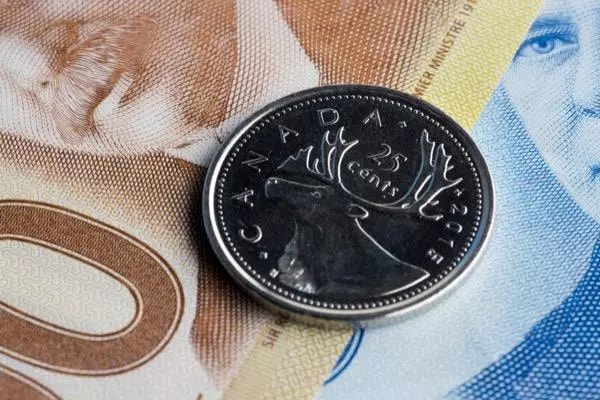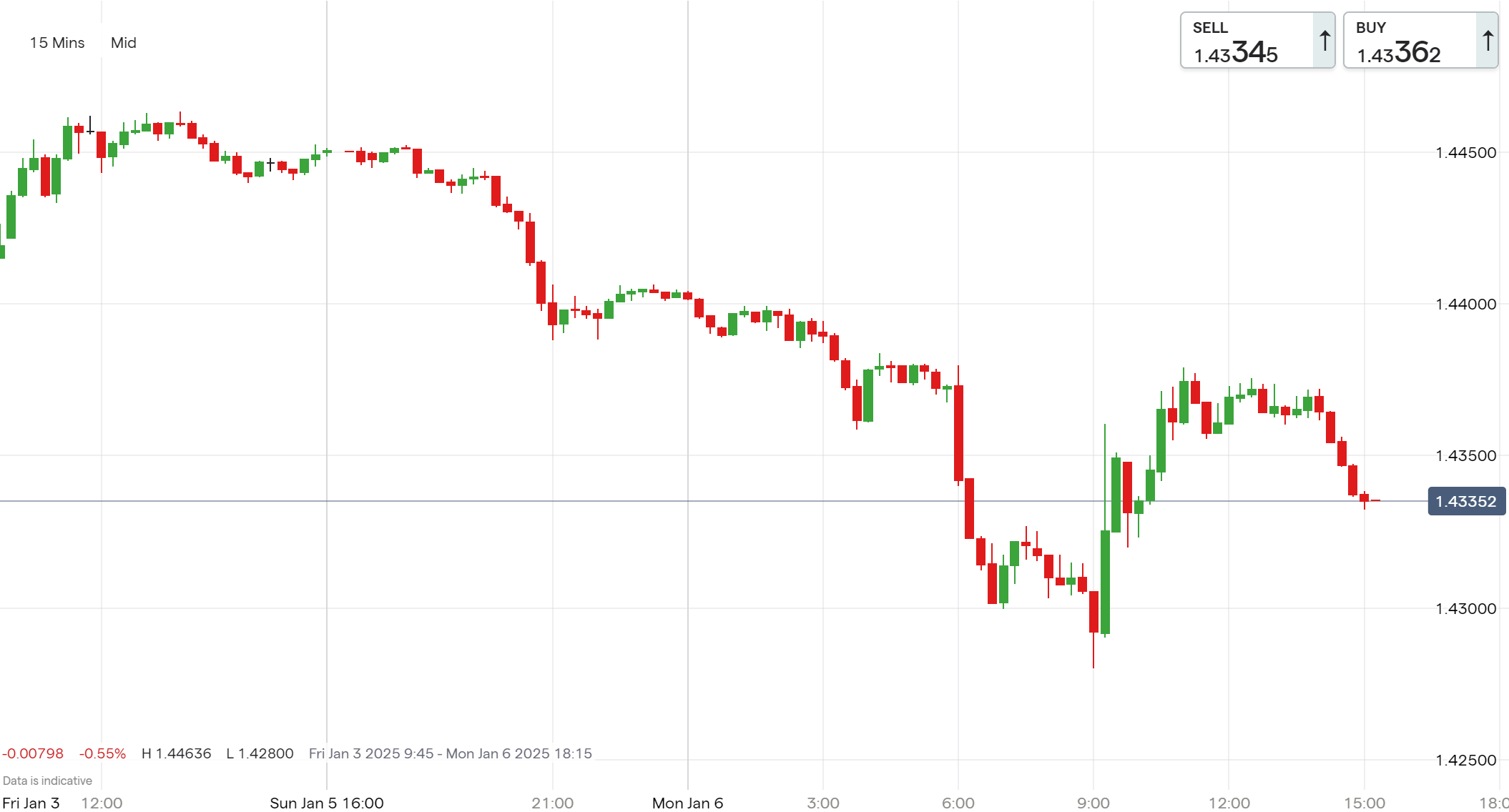USD/CAD price action: Trudeau’s expected resignation prompts dollar rebound
USD/CAD rebounds to 1.4379 as Trudeau may resign, prompting dollar strength amid political uncertainty and revised Trump tariff plans targeting only critical imports. Market volatility expected.

Key points
- USD/CAD rises to 1.4379 amid Trudeau resignation speculation
- CAD pares gains from earlier lows of 1.4280
- Trump's tariff plans shift focus to critical imports
- Political uncertainty in Canada affects CAD's stability
- Potential impacts on US-Canada trade relations noted
USD/CAD: CAD strengthens near 1.4380
The USD/CAD pair rose to 1.4379, recovering from the January 2016 lows earlier in the month. Initial dollar weakness against the loonie had the pair at lows of 1.4280 as of this morning, before traders began to assess the potential resignation of Canada’s Prime Minister Justin Trudeau. This political announcement has led to increased dollar strength within the pair, and the CAD paring some of its gains.
USD/CAD price history

Justin Trudeau expected to resign as Trump tariff proposals are recalibrated
Prime Minister Trudeau has been expected to announce his resignation soon due to growing pressure from lawmakers and the public. While not official, sources indicate that Trudeau might step down as leader of the Liberal Party before an emergency meeting of Liberal legislators on Wednesday. Trudeau's anticipated departure comes amid public dissatisfaction over economic issues. If this resignation were to happen, the party would be left without a leader ahead of the general election. Trudeau, who has served as prime minister for nine years, has dealt with a strained relationship with incoming U.S. President Donald Trump, who has threatened tariffs on Canadian products. Naturally, this political turmoil has put pressure on the Canadian dollar due to lack of clarity on leadership and corresponding economic policy.
Additionally, there is altered speculation on Trump’s initial proposed tariff policies, with his administration considering a shift from his campaign proposal of "universal" tariffs on all imports, focusing instead on imposing tariffs only on critical imports. This change aims to mitigate potential disruptions and price hikes associated with broad tariffs, which economists warned could negatively impact the U.S. economy and consumers. The plan is still under discussion and not finalized but still reflects a potential move away from Trump's initial sweeping tariff ideas.
What’s next for USD/CAD?
If Trudeau were to resign, it could ignite fresh calls for the election to be moved up so that a stable government can be put in place quickly to deal with the Trump administration for the next four years. This could lead to some initial further pressure on the CAD due to political uncertainty but could also even out in the near future.
If Canada’s exports are deemed non-critical to the U.S. and thus not subject to Trump’s proposed tariffs, it might alleviate some economic pressure and maintain trade stability between Canada and the U.S. However, if Canadian exports (such as crude oil) are classified as critical, it could lead to trade disruptions, potentially weakening the CAD due to reduced export revenues. Additionally, the current uncertainty surrounding U.S. trade policy could create volatility in the CAD as markets react to developments in U.S.-Canada trade relations.
By the U.S. avoiding broad tariffs on all imports, this approach may prevent severe market disruptions and price hikes, supporting market stability and investor confidence, which could bolster the dollar’s strength. Targeting only critical imports could reduce the inflationary impact that universal tariffs might cause, allowing the Federal Reserve (Fed)more monetary policy flexibility and inflation support. A more focused tariff strategy may also help improve the U.S. trade balance by protecting key industries without triggering widespread retaliation, contributing to a stronger dollar through positive economic fundamentals. However, if key trading partners view even the targeted approach as overly protectionist, it could lead to retaliatory measures that might weaken the U.S. dollar. Overall, the impact on the dollar will largely depend on the implementation and international reception of these tariffs, amongst other relevant economic data.
More where that came from: check out what’s new in forex today on our YouTube channel:
How to trade USD/CAD
- Open an account to get started, or practice on a demo account
- Choose your forex trading platform
- Open, monitor, and close positions on USD/CAD
Trading forex requires an account with a forex provider like tastyfx. Many traders also watch major forex pairs like EUR/USD and USD/JPY for potential opportunities based on economic events such as inflation releases or interest rate decisions. Economic events can produce more volatility for forex pairs, which can mean greater potential profits and losses as risks can increase at these times.
You can help develop your forex trading strategies using resources like tastyfx’s YouTube channel. Our curated playlists can help you stay up to date on current markets and understanding key terms. Once your strategy is developed, you can follow the above steps to opening an account and getting started trading forex.
Your profit or loss is calculated according to your full position size. Leverage will magnify both your profits and losses. It’s important to manage your risks carefully as losses can exceed your deposit. Ensure you understand the risks and benefits associated with trading leveraged products before you start trading with them. Trade using money you’re comfortable losing. Past performance is not indicative of future results.
